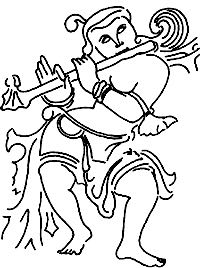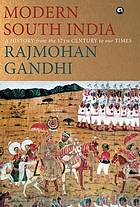Raga, Tala and Pedagogy: On the First Steps in Carnatic Music by Jeremy Woodruff

Art © Arun VC
The system by which any music is taught is the key to what is preserved, and how, in a musical tradition. I chose to research the basics of instruction in South India,both as an entry point for some practical knowledge on the South Indian flute, and as away of examining basic tenets of karnatic music. Using advanced knowledge of a foreign music without having prior knowledge of its basic pedagogy is a bit like attempting to build a chair without a seat for one’s backside. Only by studying the basic assumptions of the music, may we identify what techniques are useful to us, or not, because only then we carefully consider for what they were originally intended. […]
All melodic instrumental training in karnatic music is focused on reproducing subtleties of vocal performance. As imitating singers was the main way that instrumentalists from the time of ‘the Trinity’ updated, preserved and greatly enriched what is now known as karnatic music, it is natural that it is considered the greatest means to accomplishment in instrumental training. Where schools mainly disagree is on how (and how far) these vocal subtleties should be imitated. […]
Gitas are the first pieces to be learned after the rigorous basic exercises outlined above. The Gita, ‘Sri Gananatha’ is the first of these Gitas to be learned by any student. Maybe it is the ‘Für Elise,’ or ‘Minuet in G’ by Bach of karnatic music. It is therefore a special case, but it can still serve well as a concrete demonstration of how gamakas of a single raga, on a single song can differ radically from teacher to teacher. The gita is given in fig 2.1 in Indian notation.
[Bold typeface added above for emphasis]
Read the full paper A Western composer’s view of early music education in Carnatic music on Academia.edu >>
Tips
- to fully appreciate the above points, listen to a vocal rendition of ‘Sri Gananatha’ by Sreevidhya Chandramouli, specially recorded for the benefit of all learners >>
- practice Rūpaka tāla (3 counts) while listening to Sreevidhya Chandramouli’s singing; to get prepared follow this exercise: audio track 4 in Practice four widely used Carnatic talas >>
Carnatic music as experienced today: its social and political context in a nutshell

As the nineteenth century closes and in January 1901 a distant Empress dies, the onlooker recognizes an advance across South India in education, a growing print culture, and an emerging middle class of small landholders, doctors, lawyers, college teachers, writers, government employees and merchants.
In the realm of ideas, the onlooker discerns a few currents. One is of nationalism. Another is for reform in traditional customs and exclusions. A third is of linguistic pride. And a fourth pursues equality among castes.
Rajmohan Gandhi in Modern South India: A History from the 17th Century to Our Times , p. 236
This is a Dravidian story, and also more than that. t is a story involving four centuries, the seventeenth, eighteenth, nineteenth and twentieth, yet other periods intrude upon it… [cover notes]
Information about the persons, items or topics
Research & Custom search engines
The Oxford Illustrated Companion to South Indian Classical Music
Learn & practice more
A brief introduction to Carnatic music (with music examples and interactive map)
Bhava and Rasa explained by V. Premalatha
Free “flow” exercises on this website
Introduction (values in the light of modernity)
Video | Keeping tala with hand gestures: Adi (8 beats) & Misra chapu (7 beats)
Why Carnatic Music Matters More Than Ever
Worldcat.org book and journal search (including Open Access)